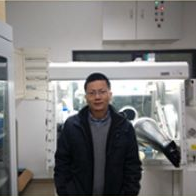Nanomaterial Catalysts for Clean Energy Conversion and Carbon Neutrality
A special issue of Nanomaterials (ISSN 2079-4991). This special issue belongs to the section "Energy and Catalysis".
Deadline for manuscript submissions: closed (31 October 2023) | Viewed by 3549
Special Issue Editors
Interests: electrochemistry of materials; electrocatalysis; low temperature polymer electrolyte membrane fuel cells; high temperature corrosion
Special Issues, Collections and Topics in MDPI journals
Interests: battery design; nanomaterial; electrode; CO2 conversion
Special Issues, Collections and Topics in MDPI journals
Interests: nanotechnologies applied to biological systems (in particular sensors, lab on chip, and organ on chip); graphene and 2D materials for energy and environment (solar cells, supercapacitors); nanomaterials for microelectronics; nanomaterials and nanostructures for CO2 trapping and reduction; multifunctional nanocomposites for 3D printing
Special Issues, Collections and Topics in MDPI journals
Special Issue Information
Dear Colleagues,
The ever-growing human population, along with the rapid development of several countries, has resulted in a steady increase in energy demand. Currently, energy is obtained from fossil fuels, whose consumption releases CO₂ into the atmosphere. This increase in CO₂ concentration, associated with global warming, needs to be mitigated. One interesting approach to reducing CO₂ emissions consists of the capture, storage, and subsequent transformation of this molecule into high-value chemical products or fuels, which can be carried out by photochemical, thermochemical, biochemical, or electrochemical routes. These approaches can be performed at mild conditions for the reduction of CO₂ to organic compounds. In addition, the carbon dioxide reduction reaction (CO₂RR) can make use of the surplus of renewable electricity to produce valuable fuels and chemicals.
One of the most critical barriers to the practical application of this technology is its reaction complexity, leading to the production of CO, methane, methanol, formic acid, ethylene, ethanol, etc.; therefore, previous research efforts have mostly focused on developing nanostructural catalysts that are able to achieve the active, selective, and stable conversion of CO2 into a single-target product. Apart from the nature of metals (noble, transition and p-block), heteroatom-doped carbon, and other materials, the configuration of nano-catalysts and reactors has been found to play an important role in the CO2 reduction capability. This Special Issue, “Nanomaterial Catalysts for Clean Energy Conversion and Carbon Neutrality”, will gather and present a collection of relevant articles, which may also be published in a printed book format. We invite the submission of original research articles and reviews to this Special Issue. Research areas of interest include (but are not limited to) the following:
- Mechanism studies of CO₂ reduction;
- Mechanism studies of the formation of major C1 and C2 products;
- Surface crystallography and product selectivity;
- Selectivity and rational design;
- Conversion of CO₂ to chemicals, materials, and fuels;
- Intermediate species during CO₂RR;
- Energetics of the CO₂ reduction reaction;
- CO₂ hydrogenation;
- Catalysis theories and experiments.
Prof. Dr. César Augusto Correia de Sequeira
Prof. Dr. Zhong Jin
Prof. Dr. Fabrizio Pirri
Guest Editors
Manuscript Submission Information
Manuscripts should be submitted online at www.mdpi.com by registering and logging in to this website. Once you are registered, click here to go to the submission form. Manuscripts can be submitted until the deadline. All submissions that pass pre-check are peer-reviewed. Accepted papers will be published continuously in the journal (as soon as accepted) and will be listed together on the special issue website. Research articles, review articles as well as short communications are invited. For planned papers, a title and short abstract (about 100 words) can be sent to the Editorial Office for announcement on this website.
Submitted manuscripts should not have been published previously, nor be under consideration for publication elsewhere (except conference proceedings papers). All manuscripts are thoroughly refereed through a single-blind peer-review process. A guide for authors and other relevant information for submission of manuscripts is available on the Instructions for Authors page. Nanomaterials is an international peer-reviewed open access semimonthly journal published by MDPI.
Please visit the Instructions for Authors page before submitting a manuscript. The Article Processing Charge (APC) for publication in this open access journal is 2900 CHF (Swiss Francs). Submitted papers should be well formatted and use good English. Authors may use MDPI's English editing service prior to publication or during author revisions.
Keywords
- CO2 reduction
- formation of C1 and C2 products
- nanostructural catalysts and their combinations
- carbon-doped nanomaterials
- innovative nano material catalysts
- in situ and post-treatment doping
- efficiency and selectivity
- design of catalysts and catalysis systems
- engineering electrode surfaces for CO₂RR
- CO2 to fuel conversion








